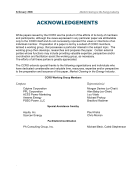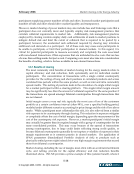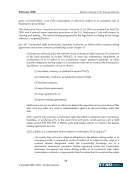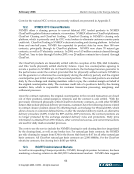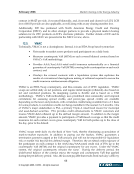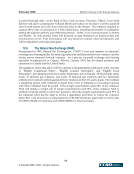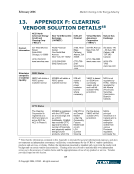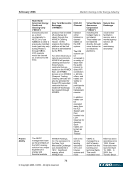February 2006 Market Clearing in the Energy Industry 5-30 © Copyright 2006, CCRO. All rights reserved. 5.3.5. Issues associated with long-dated bilateral / structured transactions A basic issue associated with long-dated bilateral contracts is the marking of contracts to market on a daily basis. To the extent there is a liquid market, the marking of a contract is not problematic, however, the longer the tenor of the contract the less likely there will be a liquid market to mark against and, as such, determining the true replacement cost of the contract may be difficult to discern, or not practical from a cost perspective. Additionally, structured transactions share many of the same issues to the extent they are not liquid. Another issue revolves around the uncertainty associated with the unknown costs due to congestion that may occur in an ISO/RTO environment. Many grand fathered and non-grand fathered agreements did not anticipate these charges. The creation of the ISO/RTO will typically result in FTRs that will offset these charges. The problem arises when there are insufficient FTRs to be allocated which may expose the contracted parties to some or all of the congestion charges. Even when there are sufficient FTRs to hedge the congestion charges, the purchase and sale agreement may not specify how they are to be allocated. 5.4. Trading organizations This section describes the current position and issues in market clearing as they relate to those organizations for which energy trading is their primary profit-making activity. Trading organizations focus on one or more of the following activities: • Proprietary trading: trading for their own account using their own capital or capital sourced from investors. Profit is made from taking positions in energy commodities in the expectation that prices, volatilities, “greeks” or credit quality will change in a favorable direction. Examples of organizations that engage in proprietary trading are hedge funds, energy trading desks at investment banks, and commodity conversion companies. • Market making: reliably offering both bids and asks so as to create liquidity in a market in return for realizing small, stable profit from the bid-ask spread. Profit is made from standing ready to buy and sell under a broad set of market conditions. The less frequently trades occur the more capital is required to support the market making activity. Net positions tend to remain open only for a short amount of time and rarely overnight. Examples of organizations that engage in market making are energy brokers, specialist market makers on electronic exchanges and “locals” on the open-outcry commodities exchanges. • Financial engineering: creating and structuring financial instruments that assist energy market participants control risks and returns on their energy positions. Users of these instruments include energy end users, energy intermediaries and investors Trading organizations engaging in these activities provide a critical service to energy markets. Proprietary trading and positioning, tend to align prices across different bases, even different markets. Market making provides liquidity and price discovery, narrowing the bid-ask spread
Purchased by unknown, nofirst nolast From: CCRO Library (library.ccro.org)


